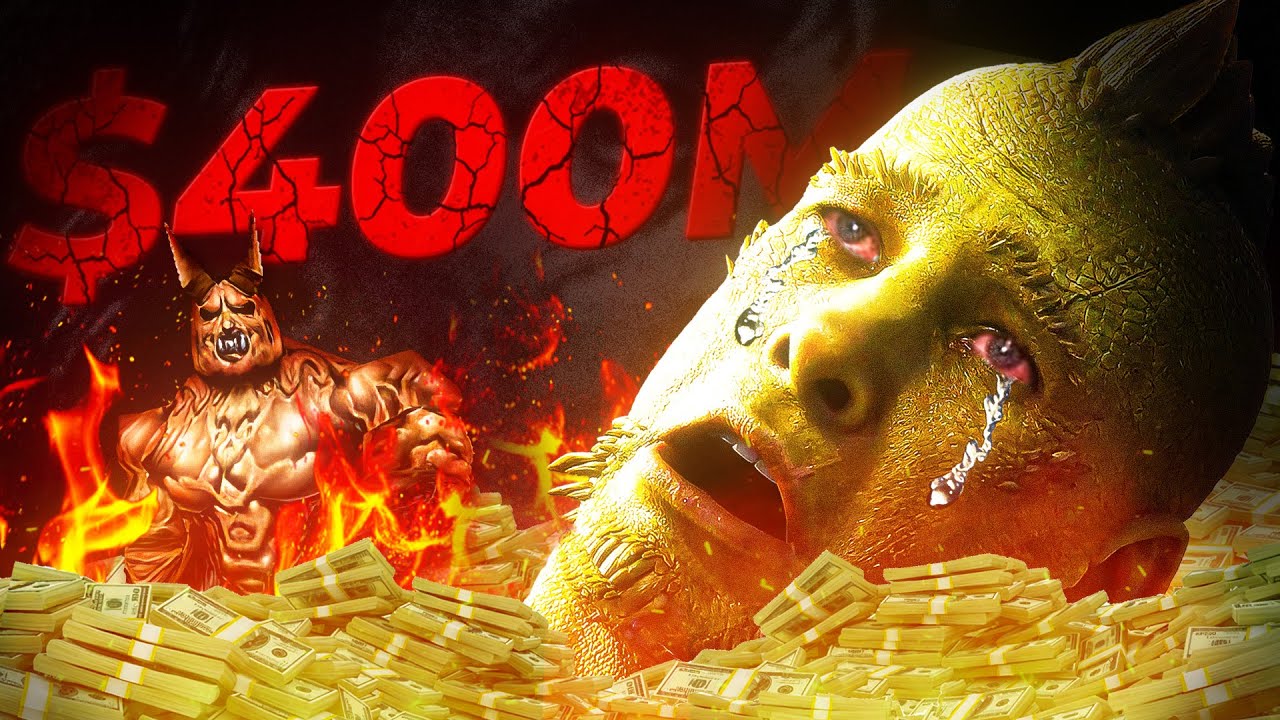🌌 ONE YEAR AGO, A $400 MILLION DREAM VANISHED INTO THIN AIR! 🌌
A year back, a sci-fi epic promised to redefine gaming—only to collapse in a blaze of glory no one saw coming. What dark secrets fueled this catastrophic flop? Why did a titan’s fortune vanish into the void? 🕳️ The truth is more shocking than you imagine. Unravel the mystery of gaming’s greatest disaster—click below to step into the shadows! 🔗

One year ago, on August 23, 2024, Sony Interactive Entertainment launched Concord, a hero shooter meant to rival Overwatch 2 and Valorant. Developed by Firewalk Studios over eight years, it was hailed internally as “the future of PlayStation” with ambitions of a Star Wars-like franchise. Yet, just two weeks later, Sony pulled the plug, issuing full refunds and closing Firewalk, marking Concord as one of gaming’s most spectacular failures. Reports estimate a staggering $400 million budget, making it PlayStation’s most expensive first-party game and a financial disaster with only $1 million in revenue. Why did Sony invest so heavily in a game that flopped so hard, and what lessons does this catastrophe hold for the gaming industry? Let’s unpack the reasons behind Concord’s collapse, the factors driving its massive cost, and its lasting impact.
The Rise and Fall of Concord
Concord was a live-service, 5v5 hero shooter set in a sci-fi universe, featuring 16 characters like Bazz and Teo, with a Guardians of the Galaxy-inspired aesthetic. Developed by Firewalk Studios, founded in 2018 by ex-Bungie developers, it aimed to be Sony’s big live-service bet after acquiring Firewalk in April 2023. The game promised weekly story vignettes and cross-media tie-ins, including an episode in Amazon’s Secret Level anthology. Sony’s leadership, including CEO Hermen Hulst and former CEO Jim Ryan, saw it as a cornerstone of their live-service strategy, announced in 2022 after acquiring Bungie.
Despite high hopes, Concord crashed on launch. It peaked at just 697 concurrent players on Steam, with an estimated 25,000 units sold across PS5 and PC, dwarfed by competitors’ millions. User reviews on Metacritic scored it a dismal 1.7/10, with players resorting to jumping off cliffs in-game to farm XP before the inevitable shutdown on September 6, 2024. Sony refunded all purchases, and Firewalk’s 210 employees were let go, cementing Concord’s place in the Museum of Failure as a historic gaming flop, rivaling Atari’s E.T. but with a far higher cost.
Why the $400 Million Price Tag?
The reported $400 million budget, while debated, stems from multiple factors. Industry insider Colin Moriarty, citing a Firewalk developer, claimed $200 million was spent by early 2023, before Sony’s acquisition, with another $200 million poured in to salvage a “laughable” alpha state. This figure likely includes development, outsourcing, marketing, and possibly the cost of acquiring Firewalk from ProbablyMonsters, though exact breakdowns remain unclear. Some, like journalist Christopher Dring, argue no game could cost this much, suggesting $200 million as a more realistic estimate, but the higher figure aligns with reports of extensive outsourcing to reach a “minimum viable product” state.
Several factors drove the budget skyward. The eight-year development cycle, starting around 2016 when Overwatch was at its peak, meant years of salaries for Firewalk’s team, many of whom were high-paid Bungie veterans. The game’s ambitious scope—bespoke cinematics, weekly story content, and cross-media plans—required significant resources. Outsourcing to fix a troubled alpha, as Sony scrambled to meet release deadlines, added costs, with external studios hired for art, animation, and technical work. Marketing efforts, including a Secret Level episode and minimal pre-launch promotion, further inflated expenses, though the campaign failed to build hype.
Sony’s internal hype also played a role. Leadership, particularly Hulst, reportedly viewed Concord as “his baby,” with ambitions of a franchise rivaling Star Wars. This overconfidence led to unchecked spending, as negative feedback was stifled by a culture of “toxic positivity” inherited from Bungie, where criticism was discouraged, preventing necessary pivots. The acquisition of Firewalk and investments in live-service infrastructure, like servers and monetization systems, pushed costs higher, despite the game’s unprepared state.
Why Did Concord Fail So Spectacularly?
Concord’s failure stems from a perfect storm of missteps. The hero shooter market in 2024 was oversaturated, dominated by free-to-play giants like Overwatch 2, Valorant, and Apex Legends. Concord’s $40 price tag and PSN requirement deterred players, who saw little value in a paid game in a genre where competitors were free. Critics found the game generic, with bland character designs, uninspired visuals, and monotonous gameplay, such as repetitive menus and clunky character select screens. Fans compared it unfavorably to Overwatch, calling it a “Temu clone” lacking innovation.
Marketing was another weak point. Unlike Helldivers 2, which built buzz through viral gameplay, Concord launched with minimal awareness, even among gaming journalists. The beta test revealed mediocrity, failing to hook players, and Sony’s promotional efforts, including a PlayStation State of Play reveal, didn’t resonate. The game’s Guardians of the Galaxy-like aesthetic felt derivative, and its characters, described as “ugly” and “uninspired,” failed to inspire fandom, unlike Overwatch’s iconic cast.
The “toxic positivity” culture exacerbated issues. Developers and Sony leadership ignored red flags, convinced the game was “too good to fail.” This led to a refusal to pivot, even when the alpha showed major flaws, resulting in a product that couldn’t compete. The game’s live-service model, requiring a large player base for sustainability, collapsed with its low player count, making servers unsustainable. Players’ apathy was evident in their XP-farming antics, turning matches into a farce before the shutdown.
Lessons for Sony and the Gaming Industry
Concord’s collapse is a cautionary tale for the gaming industry. It highlights the risks of chasing trends, as the hero shooter genre was already saturated by 2024. Sony’s $400 million loss, compared to John Carter’s $255 million movie flop, underscores the stakes of overinvestment without market fit. The game’s failure prompted Sony to cancel other live-service projects, like a God of War multiplayer title, and pivot to annual single-player releases, signaling a strategic shift.
The “toxic positivity” culture reveals the danger of stifling dissent. Had Firewalk and Sony heeded early criticism, they might have adjusted Concord’s scope or pricing model, potentially salvaging it as a free-to-play title. Leadership’s overconfidence, particularly Hulst’s and Ryan’s, raises questions about decision-making at Sony, with some calling for accountability given the financial and human cost (210 jobs lost).
For the industry, Concord warns against ballooning budgets. Games like Cyberpunk 2077 ($316 million) and Genshin Impact ($700 million over time) show rising costs, but Concord’s near-total loss is unprecedented. It suggests a need for better risk assessment, especially for live-service games requiring sustained player engagement. Sony’s pivot to single-player titles, like Marvel’s Spider-Man 2 and upcoming Wolverine, may refocus resources on proven strengths.
Emotional Stakes for Fans and Developers
Concord’s failure resonates deeply with fans and developers. For gamers, it’s a symbol of wasted potential, with $400 million squandered on a game that barely saw play. The community’s frustration, evident in low Metacritic scores and memes about cliff-jumping, reflects disappointment in Sony’s misstep, especially after successes like Helldivers 2. For Firewalk’s developers, the shutdown is a tragedy, with years of work erased and jobs lost. The “toxic positivity” culture likely compounded their frustration, as honest feedback could have saved the project.
Fans see Concord as a warning against corporate hubris. Suggestions on forums, like making it free-to-play or focusing on single-player elements, highlight missed opportunities. The game’s inclusion in the Museum of Failure underscores its infamy, but it also sparks hope that Sony will learn, prioritizing originality over trend-chasing in future projects.
Conclusion
Concord’s one-year anniversary marks a sobering milestone in gaming history. Its $400 million budget, driven by long development, outsourcing, and unchecked ambition, made it PlayStation’s costliest project, only to crash as a historic flop. Oversaturation, poor design, weak marketing, and a “toxic positivity” culture doomed the game, costing 210 jobs and shaking Sony’s live-service dreams. The lessons—avoid trend-chasing, embrace criticism, and manage budgets—are clear, but the sting of failure lingers. As Sony pivots to single-player titles, Concord stands as a reminder that even giants can fall when they lose sight of what players want. The industry will study this catastrophe for years, hoping to avoid its shadow.





